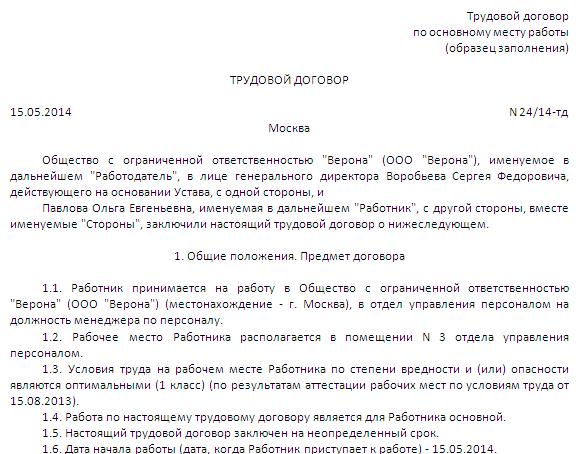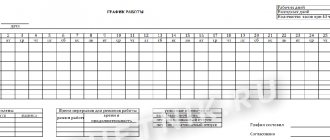History of the calendar
However, Julius Caesar is traditionally considered to be the founder of calendar months.
Before him, the ancient Romans also used their own calendar, but initially there were not 12 months, but 10. The names of the months were numerals. Then the names of the months were changed to the names of the gods, for example, January was named after the two-faced god Janus, February - in honor of the god of the underworld Februs.
In many ways, the ancient Roman calendar was determined by superstition. Initially it consisted of 304 days, but the Romans sought to fit it into the ancient Greek calendar, which consisted of 354 days.
However, even numbers were considered unlucky by the Romans, so one more day had to be added to the calendar, thus making the calendar a 12-month calendar.
However, it was extremely inconvenient to use; it was difficult to use it to predict weather conditions, and, consequently, preparation for the harvest.
How was the Julian calendar invented?
In this regard, the Roman statesman Julius Caesar attempted to implement a calendar reform. Having visited Egypt, he considered that the Egyptian calendar was much better than the Roman one.
After his visit to Egypt, he commissioned astronomers to modify the Roman calendar.
The process of creating the Julian calendar was led by the astronomer Sosigenes, but the Roman Senate, first of all, thanked Julius Caesar for the creation of the new calendar. The month of July was even named after him.
Improving the calendar
Note that the Julian calendar has been improved for a long time. Initially, this calendar did not have numbers; days were distributed by nones, calendars and eves. Obviously, this system of counting months was very difficult to understand.
It gave rise to a lot of controversy, especially in military matters. For example, to say the date of July 15th they said “17th day from the Kalends of July”, May 9th was called “7th day from the Ides of May”. Of course, this confused many and even the chroniclers sometimes could not explain the meaning of the concepts.
And in military affairs it was important to act quickly and be able to plan tactics as best as possible. Therefore, there was no question of maintaining such a system.
And since Julius Caesar was a commander highly respected by the Senate, he was able to carry out other calendar reforms that successfully took root among both the civilian population and the military.
Thus, the Julian calendar has undergone major changes, but its general features have been preserved, and to this day many countries use it.
It should be noted that the Julian calendar is not accurate. It lags behind the tropical year by 11 minutes 14 seconds, from the point of view of chronology this is 128 years by one day.
However, its main advantage over other calendars is its ease of use.
Historical reference
The measurement of time began to occur from ancient times; for this, our ancestors used events that were repeated with particular frequency. People, guided by the change of day and night, learned to count the day, and the change of phases of the moon meant months.
The change of seasons symbolized the division of time into years. Over time, people have managed to create a large number of ways to count periods of time. This diversity can be explained by the fact that no strict relationships were applied between the main units of account.
For a long time, issues related to chronology consisted of teaching people to accurately determine the moment of repetition of a particular event. Another task is to create a system that would make it possible to break down a given time period into its component elements and determine a special periodicity so that each year there are coincidences with specific natural phenomena.
The choice of starting point for chronology is also an important element. Initially, it was used as an important event that occurred in society.
How are terms interpreted in contracts?
Formalization of the agreement reached requires compliance with certain rules.
A written contract specifies:
- place and date of his conclusion;
- complete information about the parties taking on mutual obligations;
- subject of agreement;
- rights and responsibilities of the parties;
- validity periods.
If the conditions for the fulfillment of obligations are determined for a period that is considered to be a calendar period, it can be interpreted that its effect will end on December 31, and not 12 months after the date of signature by the parties.
A similar situation may arise if it is necessary to extend the agreement.
When one of the clauses of the contract or when concluding an additional agreement for its extension specifies a period as a calendar month or year, the contract will have to be renegotiated - after the month in which the established terms expire, or from January 1st.
When drafting official documents, you need to keep in mind that the wording of deadlines can be interpreted depending on the terms used.

It is important to clearly state the terms and periods in the contract to avoid discrepancies
Types of calendar periods

January 1 is the beginning of the calendar year
To avoid confusion, we will give elementary examples. We look forward to every December 31st as a holiday, and already midnight from December 31st to January 1st is considered the beginning of the calendar year.
When indicating the date, we set the year, which is a kind of chronology system.
It becomes more clear if you look at the calendar as a list of days, divided by weeks, months, highlighting weekends and holidays.
The year begins on January 01 and ends on December 31.
There are only 12 months, which also begin on the first day and end depending on the duration. For example, January, March, May, July, October, December will end on the 31st. The remaining months will end on the 30th. The exception is February; in 2020 it ended on the 29th, but for the next 3 years it will end on the 28th and only 2024 will be a leap year again.
Each week lasts 7 days from Monday to Sunday, and the start and end dates of the week can be completely different - from 1 to 31.
If we already talk about the day, this will be a specific date of the month with clarification of the year, having an account number from the beginning of the week and its name (Monday, Tuesday, Wednesday, Thursday, Friday, Saturday, Sunday).
Concept of a week term
The duration of a week as a time period is 7 days from the beginning of events.
For example, if we agree on Tuesday to place an order in a week, then it should be ready by next Tuesday.
At first glance, a minor clarification that the work must be done before the end of the calendar week means that it will be asked for completion on Monday morning.
How many weeks are counted in one calendar year?
Another important term established within the framework of federal legislation involves the concept of a calendar week. This is a seven-day period that runs strictly from Monday to Sunday.
This concept is used so that it is easy to calculate the duration of work and calculate the wages of seasonal employees. The concept is also relevant for resolving issues directly related to dismissal.
The total number of calendar weeks by which a calendar year can be measured is 52 or 53. These are precisely the periods that are most convenient for calculating dates.
Concept in different sources
Various sources in modern literature offer an interpretation of this concept in several ways, here are the main ones:
- According to official terminology, a calendar month is a time period whose duration ranges from 28 to 31 days, depending on the name and serial number.
- According to the source Wikipedia, the month acts as a unit of measurement for the annual period. It is equal to approximately one twelfth.
- The encyclopedic dictionary says that a month is a unit of time, which is approximately equal to 1/12 of a year and has its own name.
- Ozhegov’s explanatory dictionary states that a month is a unit by which time intervals are calculated in accordance with the solar calendar.
- The pages of the border dictionary contain information that a calendar month is a time interval for the work of certain employees. The development of a plan in accordance with this period is carried out in the form of tables or graphs based on the operational directive.
- The encyclopedic source says that a month is a time period close to the period of the Moon’s revolution around our planet. In astronomy, a distinction is made between the synodic period and sidereal time.
Thus, a calendar year is a time period that starts on January 1 and ends on December 31. It is divided into several small segments, that is, 12 months.
A month is a time period lasting 28-31 days. It consists of 4 calendar weeks. They are time slots that last strictly from Monday to Sunday.
There is a huge history and a large number of definitions of this concept. But in order to come to a general calculation, the Gregorian calendar was created, which is used in the life of modern man at the present time.
Let's sum it up
Almost every agreement or contract, even if it contains a minimum number of clauses and is also full of terms that are fully understandable to the signatories, may ultimately prove controversial. The fact is that not every citizen understands that the prefix “calendar/calendar” to the word year, day, week, month changes the seemingly familiar meaning of these periods and the order in which they are counted. To avoid such problems, discuss important nuances at the time of signing the contract and carefully study the relevant laws.
Citizens working under employment contracts, as well as their employers, are interested in the question: can employment contracts be concluded for a period limited by law, or can they be made indefinite? The answer to this question lies in considering the existing types of employment contracts. We will cover this topic in a special article.
Video - How to correctly draw up a contract with a customer
In economic and other practice, you can often come across an interesting term - calendar year . What segments is it divided into, and what is its duration?

Calendar year is what period according to the legislation of the Russian Federation
Every person knows that a year is a time period equal to 12 months. Its countdown begins in January and ends in December.
However, labor law could argue with all of the above, since it provides us with such a term as the calendar year.
This period is defined in legislation and has a significant impact on the preparation of legal documents and many different processes.
A calendar year is a concept that, contrary to all your expectations, has many differences from an “ordinary” year.
Changes and amendments
Federal Law of October 11, 2021 N 368-FZ “On Amendments to Article 5 of the Federal Law “On Calculation of Time” Federal Law of July 3, 2021 N 271-FZ “On Amendments to Article 5 of the Federal Law “On Calculation” time" Federal Law of April 26, 2021 N 109-FZ "On Amendments to Article 5 of the Federal Law "On the Calculation of Time" Federal Law of April 5, 2021 N 87-FZ "On Amendments to Article 5 of the Federal Law " On the calculation of time" Federal Law of February 15, 2021 N 27-FZ "On amendments to Article 5 of the Federal Law "On the calculation of time" Amendments to the article of the Federal Law "On the calculation of time"
Adopted by the State Duma on May 20, 2011
Approved by the Federation Council on May 25, 2011
Article 1. Subject of regulation and purposes of this Federal Law
1. This Federal Law defines the legal basis for calculating time, establishing time zones, and also regulates the relations that arise when disseminating information about the exact value of time and calendar date.
2. The objectives of this Federal Law are:
1) determination of the legal basis for calculating time;
2) ensuring the needs of citizens, society and the state for reliable information about time and calendar date.
Article 2. Basic concepts used in this Federal Law
This Federal Law uses the following basic concepts:
1) state primary standard of units of time, frequency and national time scale - a state primary standard that ensures reproduction, storage and transmission of units of time and frequency with the highest accuracy in the Russian Federation, approved in accordance with the legislation of the Russian Federation on ensuring the uniformity of measurements and used as original on the territory of the Russian Federation;
2) the Gregorian calendar is a time calculation system that is based on the cyclic revolution of the Earth around the Sun, in which the duration of one cycle of the Earth’s revolution around the Sun is taken to be 365.2425 days and which contains ninety-seven leap years per four hundred years;
3) calendar date - serial number of the calendar day, serial number or name of the calendar month and serial number of the calendar year;
4) calendar week - a period of time from Monday to Sunday lasting seven calendar days;
5) calendar year - a period of time from January 1 to December 31, lasting three hundred sixty-five or three hundred sixty-six (leap year) calendar days. The calendar year is numbered according to the Gregorian calendar;
6) calendar month - a period of time lasting from twenty-eight to thirty-one calendar days. The calendar month has a name and serial number in the calendar year;
7) calendar day - a period of time lasting twenty-four hours. A calendar day has a serial number in a calendar month;


9) Moscow time - the time of the time zone in which the capital of the Russian Federation, the city of Moscow, is located;
10) national time scale of the Russian Federation - an ordered numerical sequence of sizes of time units, reproduced and stored by the State Service of Time, Frequency and Determination of Earth Rotation Parameters based on the state primary standard of time units, frequency and national time scale;
11) time zone - a part of the territory of the Russian Federation in which a single time established by the Government of the Russian Federation operates.
Article 3. Legal basis for calculating time
1. The legal basis for calculating time is the Constitution of the Russian Federation, this Federal Law, other federal laws regulating relations arising in the calculation of time, and other regulatory legal acts of the Russian Federation adopted in accordance with them.
2. The provisions of federal laws and other regulatory legal acts of the Russian Federation relating to the subject matter of regulation of this Federal Law are applied to the extent that does not contradict this Federal Law.
3. If an international treaty of the Russian Federation establishes rules other than those provided for by this Federal Law, the rules of the international treaty apply.
Article 4. Calculation of the calendar date and time of the calendar day
1. On the territory of the Russian Federation, the Gregorian calendar is used to calculate the calendar date.
2. The calendar date is calculated from 00 hours 00 minutes 00 seconds on January 1, 1 year.
3. The time of a calendar day is calculated in hours, minutes and seconds. The beginning of the calendar day is taken to be the moment in time corresponding to 00 hours 00 minutes 00 seconds. The end of a calendar day is taken to be the point in time corresponding to 24 hours 00 minutes 00 seconds.
4. The counting of hours, minutes and seconds during a calendar year, calendar month and calendar week does not change.
Article 5. Time zones
1. Time zones are established on the territory of the Russian Federation, the boundaries of which are formed taking into account the borders of the constituent entities of the Russian Federation. The composition of the territories forming each time zone and the procedure for calculating time in time zones are established by the Government of the Russian Federation.
2. The decision to transfer the territory (part of the territory) of a constituent entity of the Russian Federation from one time zone to another time zone is made by the Government of the Russian Federation on the basis of a joint proposal of the legislative (representative) body of government of the constituent entity of the Russian Federation and the highest official of the constituent entity of the Russian Federation (head of the highest executive government body of a constituent entity of the Russian Federation).
3. Moscow time serves as the reference time when calculating local time. Numerical values of local time in different time zones differ by an integer number of hours. The counting of minutes and seconds is the same in all time zones.
Article 6. Dissemination of information about the exact meaning of time and calendar date
1. The State Service for Time, Frequency and Determination of Earth Rotation Parameters disseminates information on the exact value of Moscow time and calendar date, as well as reference time signals using the GLONASS global navigation satellite system and satellite communication systems (in terms of transmitting time signals), radio communications (including specialized radio stations), radio broadcasting and television (including satellite).
2. Information about the exact value of Moscow time and calendar date, as well as reference time signals, are generated on the basis of the national time scale of the Russian Federation.
3. Information about the exact value of Moscow time and calendar date, disseminated by the State Service for Time, Frequency and Determination of Earth Rotation Parameters, is official and publicly available.
4. Features of the dissemination of information about the exact value of time and calendar date during the period of mobilization, during martial law and in wartime are established by the Government of the Russian Federation.
Article 7. Ensuring the uniformity of measurements when carrying out time calculation activities
Mandatory metrological requirements for time measurements, including indicators of the accuracy of time measurements, are established in accordance with the legislation of the Russian Federation on ensuring the uniformity of measurements.
Article 8. Liability for violation of this Federal Law
Violation of this Federal Law entails liability in accordance with the legislation of the Russian Federation.
Article 9. Ownership of funds and objects of the State Service of Time, Frequency and Determination of Earth Rotation Parameters
State standards of time units and means of transmitting information about the exact value of Moscow time, ensuring the functioning of the State Service of Time, Frequency and Determination of Earth Rotation Parameters, are the property of the Russian Federation, are withdrawn from circulation and are not subject to alienation.
Article 10
Recognize as invalid the Resolution of the Council of the Republic of the Supreme Soviet of the RSFSR of October 23, 1991 N 1790-I “On streamlining the calculation of time on the territory of the RSFSR” (Vedomosti of the Congress of People's Deputies of the RSFSR and the Supreme Council of the RSFSR, 1991, N 46, Art. 1551).
Article 11. Entry into force of this Federal Law
This Federal Law comes into force sixty days after the day of its official publication.
President of Russian Federation
D. Medvedev
What is a calendar year in a contract and how is it calculated?

When concluding contracts, the parties must have a clear understanding of what a calendar year is . However, this concept is often used in contracts without proper understanding.
For example, the parties entered into an employment agreement for the period from April 2015 to April 2021 with the condition that if there is no expression of the will of the parties, the agreement will be extended for one calendar year. Taking into account the provisions of Law No. 107-FZ, it is not worth asserting that the contract in this case will last until April 2021, since the calendar year is counted from January 1 to December 31. This means that the contract will only be extended until December 31, 2016, and clearly shows why it is so important to know how to calculate the calendar year .
What calendar periods exist?
The Law “On the Calculation of Time” dated June 3, 2011 No. 107-FZ FZ contains definitions of various calendar periods, including:
- calendar year;
- calendar month;
- calendar week.
With the help of these terms, the legislator seeks to make the calculation of time more accurate and specific, and also guarantees to society the reliability of information about the time and dates of the calendar.
Interpretation of the term for contracts
Many citizens do not understand how important it is to correctly interpret a concept that seems to be heard every day. The fact is that the vast majority of contracts concluded today contain a mention of the duration of the agreements outlined in them.
For example, if the exact date of expiration of the contract is not indicated, but it was indicated that the contract is valid for one calendar year, then its parties risk having completely different ideas as to exactly what date the mutual cooperation will end. As a result, litigation regarding failure to meet deadlines may occur.
Let's give an example. The two companies entered into an agreement in April, formalizing it for a calendar year, stipulating that if it is valid in April of the next year, the agreements and relations will be automatically extended for another similar period. By concluding a contract for a year and specifying the prefix “calendar”, the companies thereby decided that they would not have to renew it in April of next year. Meanwhile, the calendar year in reality ends on December 31, as we said above, and therefore, according to the law, it will have to be renewed much earlier.
Controversial and conflict situations often arise when terms in a contract are interpreted differently, when each party initially or now understands the term in its own way
Calculation by other terms
The parties to the concluded agreement have the right to independently determine what time period they will use as part of the preparation of documentation, namely:
- year;
- day;
- month.

The parties to the agreement have the right to use other calendar periods of time in its text
In addition, official documentation often includes such a concept as a calendar week, since using this designation it is much more convenient to determine deadlines than by days, for example.
Legally, a calendar week is understood as a period of 7 days, which begins directly on Monday and ends on Sunday.
So, for example, when it comes to the official calculation of the working hours of employees working on the basis of short-term contracts, the term calendar week is most often used.
The legislative act we previously mentioned also has clarifications regarding how many calendar weeks there are in one year. Depending on what year it is, their numbers may be:
- 52 weeks;
- 53 weeks.

Pay attention to official terminology, this will later guarantee you safety from harm and peace of mind
Concept in legislation
The answer to the question regarding the meaning of this concept is contained in detailed form in the legislation, in particular in Art.
2 Labor Code of the Russian Federation. This is a time period that lasts from January 1st to December 31st. That is, the total duration is 365 for a classical year and 366 for a leap year. Absolutely every annual calendar period is assigned its own serial number. The Gregorian calendar serves as a key guideline for assigning one value or another to it. A large number of people use it today.
If we consider this issue from the point of view of etymology, it assumes its origin from the words “to please”, “satisfy”, “to correspond”. Therefore, initially this concept meant “appropriate time,” and only after that it began to be designated as time in general.
This word does not have an independent etymology, but there are versions of its origin from various languages - German, Old Indian, Indo-European, Old Church Slavonic, Latin, Scandinavian.
Calendar days concept
It would seem that what could be easier than finding out the deadline for fulfilling obligations, which is specified in the contract? However, how to calculate it if the contract does not say: count in calendar or working days? What if the execution time ends on the weekend? Paradoxical as it may seem, when concluding an agreement, the signatories can interpret the deadlines for fulfilling their obligations in completely different ways. In particular, they may have a different view, for example, of the days within which a product must be delivered, work performed, a service rendered, or money transferred. Most often, contracts contain such “varieties” of days as calendar, working and even banking days.

Basics
What days are considered calendar days? This is exactly the question that worries many citizens working in various organizations. After all, you have to deal with this in everyday life.
When preparing documentation related to official relations, it is very important to see the fundamental difference between working days and calendar days.
This will help prevent errors in the work of the HR and accounting departments when calculating vacation and travel allowances.
Interesting
So, this means that calendar days are all days of the month, including working days and holidays. This concept is most often used in labor legislation. For example, an employee is entitled to vacation in calendar days. This means that the latter’s rest period will include not only the period of time during which he usually works, but also weekends. But how is vacation pay calculated?
According to the rules, funds must be transferred to the employee three days before the start of his legal vacation. It should also be noted that not only working days, but also weekends (i.e. all calendar days) are subject to payment. That's the order.
When calculating the salaries of subordinates, the accountant takes into account only working days. For example, if a subordinate works in an organization for eight hours, five days a week, then, accordingly, his days off are not paid. That's how it's supposed to be by law.
Additionally
Quite often in official documentation you can find a requirement to warn the other party of your intentions at least one calendar month in advance.
What does this concept mean when it comes to calculating deadlines? Taking into account the previously stated definition, we can conclude that in order to comply with the warning requirements, a party must notify the other party of the occurrence of any event no later than the first day of the calendar month preceding the one in which the specific action is planned to be performed (for example, a change in material conditions service agreement). Only in this case will the legal requirements not be violated.
If a person has just recently come to work in an organization, then only after six months of carrying out official activities will he have the right to paid leave. As already described earlier, in labor legislation such a rest period is calculated only in calendar days.
But what will be its duration in this case? It turns out that the new employee is entitled to vacation for 14 calendar days. After all, the working period has not been fully worked out. This means that the manager will not provide such an employee with 28 calendar days of vacation.
Otherwise he will break the law.
Holidays
They fall on certain days of the week. The Labor Code stipulates public holidays on which working people are given time to rest. Citizens carrying out official activities on these days should be paid increased wages or given an additional day off. Otherwise, the head of the organization will violate the law.
Holiday calendar days are enshrined in Article 112 of the Labor Code. These include:
- New Year holidays.
- Christmas.
- February 23 is Defender of the Fatherland Day.
- March 8 is International Women's Day.
- May 1 - Spring and Labor Day.
- May 9 is Victory Day.
- November 4 is National Unity Day.
- June 12 is Russia Day.
If any of the above holidays falls on a weekend, it is transferred to the next working day. This is written in the legislation.
Federal Law No. 107 “On the Calculation of Periods” of 2011 contains such a definition as a calendar year. Many citizens are immediately interested in the question of what does this mean? So, a calendar year is a period of time that lasts from the first of January and ends on the 31st of December.
Its duration includes 365 or 366 days. It depends on whether it is a regular year or a leap year. In addition, each year has its own serial number. For example, now is 2017, after it ends on December 31, the calculation of 2018 will begin on January 1st. This is the order.
It should also be noted that the main guideline for assigning a specific number to each year is the Gregorian calendar.
How is this reflected in the daily activities of organizations and enterprises? Here it is immediately necessary to say that when concluding contracts, firms must have a clear understanding of what a calendar year is.
However, very often this concept is used by company managers without proper understanding.
Each week, month and year consists of a certain number of calendar days. This number includes public holidays and weekends. As a general rule, many organizations operate from Monday to Friday.
Weekends are considered Saturday and Sunday. Therefore, if a person is asked to work outside of working hours, he must be compensated double or given an additional day off.
But why are such concepts as calendar month, week, year needed in legislation? The answer here is very simple. In order to correctly calculate the deadlines for completing official documentation.
For example, if a document says that it can be appealed to a higher authority within several calendar days, then this means that even weekends are included here. You definitely need to know about this.
In order to better navigate time, citizens use concepts such as working days, holidays, and weekends when communicating with each other and when filling out documents. So, all these days are included in the calendar.
If the contract states that the work will be done in a certain number of calendar days, then so be it. This period of time includes both holidays and weekends. You need to know about this.
It is for this reason that many organizations prefer to limit themselves to carrying out their duties only on weekdays. This is what is stated in the contract.
If we are talking about vacation, then it is also counted in calendar days. For the reason that such a rule is spelled out in the Labor Code. In addition, when it comes to vacation pay, all calendar days are taken into account (excluding holidays). Therefore, in order not to violate the law, citizens and organizations, institutions must have an understanding of the correct calculation of time.
What is a calendar month
Within the framework of contractual relations, such a concept as calendar month . Among people, the question also often arises about what period this is and how long it lasts.
Within the framework of contracts, there is also often a provision that one party undertakes to notify the other party of its actions 1 calendar month in advance. The meaning of the term is defined in No. 107-FZ, which regulates the terms: this is a period whose duration is 28-31 calendar days.
Months are also calculated by serial numbers and by names of the Gregorian calendar. This term is used not only in the above legal acts, but also in other areas within the framework of current legislation.
So, in order for the requirement to warn the parties within a calendar month to be met, one person retains the obligation to notify the other party of the occurrence of a certain event , for example, that the terms of the contract will be changed or supplemented. And this should happen no later than the 1st day of the month that precedes the period for which this event is planned.
As can be noted, all of the above concepts are quite widely used within the framework of modern law. This position is necessary in order to deal in detail with determining dates and deadlines , for example, in order to determine the duration of the contract and the moment at which it begins to function.
The time period, which is obtained by dividing the calendar year, is divided into 12 periods, which are called calendar months . Each of them has a specific name and contains a strictly defined number of days.
As noted earlier, this number ranges from 28 to 31. Based on the Gregorian calendar, all months are strictly in the following sequence :
- January (lasts 31 days);
- February (the traditional number of days is 28 for a normal year and 29 for a leap year);
- March – 31 days;
- April – 30 days;
- May – 31 days;
- summer months, respectively, 30, 31, 31;
- autumn – September (30), October (31), November (30);
- December –31 days.
What year is a leap year?
To determine the “leap” year, it is enough to perform simple mathematical operations. The fact is that if a year is a leap year, then it is divisible by 4 without a remainder, but it is not divisible by 100 or divisible by 400 without a remainder. Let's look at an example.
Is 2020 a leap year or not?
Let's use the data from the previous paragraph to determine what year 2021 is. So, 2021 is divisible by 4 without a remainder (2019/4 = 505). This means 2021 is a leap year.
2020 is a leap year
Astronomical and calendar definitions of the year
Astronomical definitions of a year are based on the period between repetitions of various astronomical events associated with the Earth's orbital motion around the Sun. These periods, expressed in days, are real numbers, that is, they do not contain an integer number of days. Calendar years, on the contrary, must contain only an integer number of days to ensure economic activity.
Sources
- https://moepravoo.ru/ponyatie-kalendarnyj-mesyac-zakonodatelnoe-zakreplenie.html
- https://urist-bogatyr.ru/article-item/chto-takoe-kalendarnyy-god/
- https://ZnayBiz.ru/kadry/rezhim/rabochee-vremya/kalendarnyj-god.html
- https://msovetnik.ru/kalendarnyj-god-eto-kakoj-period-po-zakonu.html
- https://rg.ru/2011/06/06/vremya-dok.html
- https://sudsistema.ru/category-24/kalendarniy-mesyats-eto-kakoy-period.php
- https://nsovetnik.ru/otpusk/kalendarnyj_god_eto_kakoj_period_po_zakonu/
- https://yr-expert.com/kalendarnyj-god-eto/
- https://finpomoj.ru/ponjatie-kalendarnyj-mesjac-zakonodatelnoe-zakreplenie.html
- https://maksimovka.ru/dogovor-deystvuet-techenie-odnogo-kalendarnogo-goda/
- https://calculat.ru/skolko-dnej-v-godu
- https://wiki2.org/ru/%D0%93%D0%BE%D0%B4
[collapse]
Calculation by other terms
The parties to the contract have the right to independently determine which period is used to indicate the duration of the obligations: year, month, week.
An equally important period that appears in labor documentation is the calendar week, since it is more logical and convenient to count some obligations in this particular period of time.
According to the provisions of the law, the weekly period is 7 days, starting on Monday and ending on Sunday.
This is the preferred method of calculating the duration of work for workers on short-term contracts, attracted at a certain moment due to a temporary need that has arisen. Due to the specific nature of the work of a seasonal employee, it is easier for accounting departments to use the concept of a week when calculating earnings, resolving issues with termination of an employment contract, etc.
Legislative Act No. 107 also clarifies how many calendar weeks there are in a year. Depending on the year, their number is 52-53 weeks.
Even a simple contract with a minimum of clauses and extremely clear terms requires a clear understanding of where the rights and obligations of the signatories begin and end. When resolving issues with hiring, going on vacation, or dismissal, it is important to correctly determine the duration, beginning and end of the calendar period established by law and the contract with the employee.
Free question to a lawyer
Need some advice? directly on the site. All consultations are free. The quality and completeness of the lawyer’s response depends on how completely and clearly you describe your problem.
In accounting, the reporting period
- a period of time that includes facts of economic activity that occurred during its duration or related to it, reflected by an economic entity in accounting and financial statements.
The main reporting period is the year, the intermediate ones are the month and quarter.
The reporting period that begins on January 1 and ends on December 31 is called the calendar reporting period.
If the reporting period, having the same duration, begins on any other date, then the reporting period is called a financial year.
The most common are quarterly and annual reporting periods:
Quarterly reporting is generated for a period of time that occurs every quarter (3 months) of the year.
The reporting period for annual accounting (financial) statements (reporting year) is the calendar year - from January 1 to December 31 inclusive, with the exception of cases of creation, reorganization and liquidation of a legal entity.
The first reporting year is the period from the date of state registration of an economic entity to December 31 of the same calendar year, inclusive.
If the state registration of an economic entity was carried out after September 30, the first reporting year is the period from the date of state registration to December 31 of the calendar year following the year of its state registration, inclusive.
Thus, annual statements are prepared for a period of time arising every year.
In tax accounting, a reporting period is a time period after which taxpayers and tax agents are required to provide tax reporting to the tax authority in relation to each individual tax. Reporting periods are usually recognized as the first quarter, half year and nine months of the calendar year. In some cases, the reporting period may be a month.
For example, the reporting periods for income tax are the first quarter, six months and nine months of the calendar year.
At the same time, reporting periods for taxpayers who calculate monthly advance payments based on actual profits received are one month, two months, three months, and so on until the end of the calendar year.
At the end of each reporting period, advance tax payments must be made.
Since in tax accounting reporting periods are formed quarterly or monthly, it makes sense to establish the same reporting periods in accounting.
Still have questions about accounting and taxes? Ask them on the accounting forum.
Reporting period: details for an accountant
- The date of receipt of income and the deadline for transferring personal income tax are different reporting periods.
Form 6-NDFL for the corresponding reporting period reflects those transactions that were carried out ... an operation in one reporting period, and completes it in another reporting period, then this ... and, quite possibly, different reporting periods. When paying for vacation, a similar situation occurs... in one of the last three months of the reporting period. Example: A transport company's wages... personal income tax transfers fall on different reporting periods, then the information is calculated... stage. Calculated for the reporting period to which the date relates... - Correction of errors in AC accounting Detection
Procedure for correction An error for the reporting period discovered before the submission of... the transaction log Reflected on the last day of the reporting period by an additional accounting entry or... and an additional accounting entry An error in the reporting period identified during the implementation of... accounting accounts by the last date of the reporting period ; b) by forming an accounting... for previous tax (reporting) periods, in the current tax (reporting) period recalculation of the tax base... - We prepare quarterly reporting forms for 2021.
The acceptance, fulfillment, and failure to fulfill obligations in the reporting period are reflected in the report (f. 0503738... data summarized for the reporting period on changes in indicators at the beginning of the reporting period of the opening balance sheet... 30,000 “Financial result of the previous reporting period” (change indicators during the inter-reporting period... in reports (information) at the beginning of the reporting period (opening balances), adjusted to... at the end of the financial year preceding the reporting period (indicators of opening balances according to... - Recommendations of the Ministry of Finance on the application of the GHS “Accounting Policies”
...), balance sheet (f. 0503730), formed for the reporting period, are subject to adjustment on the lines reflecting ... on the line “Financial result of past reporting periods (040130000)”. Changes in balance sheet indicators additionally... at the beginning of the reporting period (beginning of the year preceding the reporting period (year)), indicators at the end of the reporting period (month...) of the year preceding the reporting period (year), turnover by indicators for the reporting period of the year preceding the reporting period (year... - New forms of individual (personalized) accounting
Form SZV-KORR Section 3 “Reporting period” Reporting period (code) Entered in accordance with... reporting periods of 2010 - the amounts for the last six months of the reporting period are indicated, and for reporting periods... reporting periods of 2010 the amounts for the last six months of the reporting period are indicated, and for reporting periods... three months of the reporting period (for the reporting periods of 2010 - in the last six months of the reporting period). At… - Analysis of changes made to Instruction No. 191n
Errors of previous years identified in the reporting period). Thus, the indicators that form... the beginning of the year, the end of the reporting period and the end of the similar reporting period of the previous financial year... data summarized for the reporting period on changes in indicators at the beginning of the reporting period of the introductory... the reason for making corrective entries of the previous reporting period, adjustment of opening balances in... isolation changes in indicators at the beginning of the reporting period according to the corresponding reason codes... - Review of changes in accounting (budget) statements
As a result of: corrections of errors of previous reporting periods; implementation of federal accounting standards... 30,000 “Financial result of the previous reporting period” (changes in indicators during the inter-reporting period... in reports (information) at the beginning of the reporting period (incoming balances), adjusted to... at the end of the financial year preceding the reporting period (input indicators balances according to the data... reflected in the reports (information) for the reporting period. *** Based on the indicators given in... - New standards for 2021
Procedure for correcting errors in financial statements" Period of error detection Rules for correcting errors... and additional entry) at the end of the reporting period. 2. Correct reporting. Basis... and additional entry) at the end of the reporting period. 2. Correct reporting. The basis... for signing reports, registering them in the reporting period is the responsibility of the institution. Standard “Events... registration of ownership initiated in the reporting period; change after the reporting date of the cadastral... - Public disclosure of reporting indicators
Based on the provisions of the accounting policy of the institution applied in the reporting period; c) regulatory... disclosed in the reporting for previous reporting periods. When reclassifying reporting indicators into... the institution does not reclassify reporting indicators for the previous reporting period, then in... in relation to the financial result of the reporting period (clause 36 of the GHS “Reporting... on changes in the name of the institution for the reporting period, if such changes were made; 3 ... - Changes in PBU 18/02: permanent and temporary differences and assets will be accounted for in a new way
Profit in the reporting period. The organization recognizes PNR (PND) in that reporting period, in... temporary differences that arose in previous reporting periods, but entailed an adjustment of the conditional... due to: the occurrence (repayment) of temporary differences in the reporting period; changes in tax rules or tax... will receive taxable profit in subsequent reporting periods; b) values that explain the relationship... of the loss received by a CTG participant in the reporting period, taken into account when determining the consolidated... - And again about reporting on property tax of organizations
Tax periods starting from the first reporting period of 2021 reporting on... on property of organizations for the first reporting period of this year; notify the tax office... the deadline for submitting the notification. The first reporting period of 2021 is I ... tax reporting for the first reporting period of 2021 is 30 ... unified tax reporting; tax (reporting) period during which the designated... tax reporting for the first reporting period of 2021 is applied; submission of notice... - Income tax in 2021: clarifications of the Ministry of Finance of Russia
on the 1st day of the tax (reporting) period following the tax (reporting) period in which it was concluded... is taken into account as part of non-operating expenses of the reporting period in which the claim period expires... expenses related to past tax (reporting) periods, can be taken into account in the tax... concluded for a period of more than one reporting period, the insurance premium to the policyholder must be taken into account... profit taxation at the end of the corresponding reporting period (tax period) or at... - Updated annual forms of financial statements
Data (correction of errors of previous reporting periods, implementation of federal standards... for the amount of the balance formed for the reporting period according to the corresponding analytical... future periods" developed for the reporting period. Indicator of excess of credit turnover... future periods" developed for the reporting period . Indicator of excess of debit turnovers... upcoming expenses" established during the reporting period. Indicator of excess of debit turnovers... - Events after the reporting date: correcting errors
An event that occurred in the reporting period, a change in the cadastral valuation of land after... in accounting, the last day of the reporting period before reflecting the final transaction... disclosed in the reporting. By the end date of the reporting period, it will be necessary to generate a posting: Dt... indicate the facts that occurred during the reporting period. This position is supported by the principle of assumption... “Financial result of past reporting periods.” Indicators of financial statements at the beginning of the reporting period (in any... - The procedure for providing the dismissed employee with extracts from information in the form SZV-M and SZV-STAZH
These extracts (for the last reporting period or for the entire period of work... these extracts (for the last reporting period or for the entire period of work... of your organization, but only for the reporting period : SZV-M - for the reporting... of your organization, but only for the reporting period: SZV-M - for the reporting... by the policyholder to the Pension Fund of Russia for the reporting period: SZV-M - for the reporting... they disagree on what is considered the reporting period: the period, in which the employee... is an insured in the Pension Fund for past reporting periods, it is logical to conclude that...
Calendar year
the period of time from the first to the last day of a particular year according to the calendar (See Calendar). In the Gregorian (as well as in the Julian) calendar, a regular year contains 365 days, and a leap year contains 366 days
.
Great Soviet Encyclopedia. - M.: Soviet Encyclopedia. 1969-1978.
See what “Calendar year” is in other dictionaries:
- See calendar year Dictionary of business terms. Akademik.ru. 2001 ... Dictionary of business terms
CALENDAR YEAR, see Year (see YEAR) ... Encyclopedic Dictionary
A year calculated strictly according to the calendar, as well as the accounting and reporting period coinciding with it. The business and financial year may not coincide with the calendar year. Raizberg B.A., Lozovsky L.Sh., Starodubtseva E.B.. Modern economic dictionary ... Economic dictionary
Calendar year
- a year that begins on January 1 and ends on December 31 of the same year. Different from the K. year are the budgetary, financial, educational, etc., theater seasons, which do not begin from the starting date of the current K. year and end in the next K. year. O... ... Publishing dictionary-reference book
Calendar year
— Calendar year, the period of time from the first to the last day of a particular year according to the calendar. In the Gregorian (as well as in the Julian) calendar, an ordinary year contains 365, and a leap year 366 days... Accounting Encyclopedia
calendar year
- A period of time of 365 days for common years and 366 days for leap years... Geography dictionary
calendar year
— 2.29 calendar year: The cyclical period of time according to the calendar that is required for one revolution of the Earth around the Sun, starting on January 1, 0 hours 00 minutes 00 seconds. Source... Dictionary-reference book of terms of normative and technical documentation
A year calculated according to the calendar, etc. the accounting and reporting period coinciding with it. The economic and financial year may not coincide with the calendar... Encyclopedic Dictionary of Economics and Law
calendar year
- a year calculated strictly according to the calendar, as well as the accounting and reporting period coinciding with it. The business and financial year may not coincide with the calendar year... Dictionary of economic terms
number of operations performed by a MIPS machine in one calendar year
— — [] Topics information security EN MIPS year ... Technical Translator's Directory











